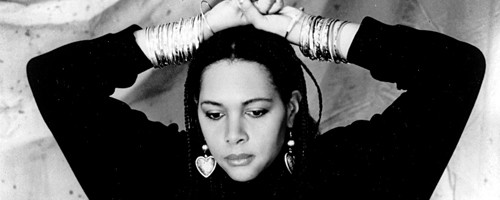Some subjects are more constructively talked “around” than “about” because they can’t be approached directly. Some subjects are talked around because they are impenetrably enigmatic. Fashion photographer Bill Cunningham is one of these subjects.
Stalking Bill Cunningham

Some subjects are more constructively talked “around” than “about” because they can’t be approached directly. Some subjects are talked around because they are impenetrably enigmatic. Fashion photographer Bill Cunningham is one of these subjects.
You may know that Cunningham’s genius is his evenhanded devotion to the fashion of the proletariat and that of the glamour class. Readers of The New York Times and followers of fashion will already be familiar with his photo spreads documenting the fashion trends on both the runway and the sidewalk. Cunningham is more anthropologist than artist.
He is as mysterious as he is successful and charismatic. His New York Times column, On the Street, has run for well over three decades. He still shoots in film. He doesn’t accept money. And for a fashion photographer, he is self-consciously unfashionable.
When William Press began filming Bill Cunningham New York (2010), Cunningham was one of two tenants still residing in the rent-controlled artists’ flats above Carnegie Hall. Press takes us inside Cunningham’s file-cabinet-jammed apartment, but he fails to penetrate Cunningham’s heart.
“I have no idea about his private life. I have no idea if he’s lonely. I have no idea where does he eat dinner every night,” says Anna Wintour, editor-in-chief at Vogue, a sentiment echoed by everyone else in the film.
For a man who so loves to talk, to chat really, Cunningham is tight-lipped about himself. Press asks a series of personal questions, a scene that seems to enrage some critics, and Cunningham offers a glimpse, but it fails to answer our questions and raises still more.
So Press contents himself with talking around the man. The history of Carnegie Hall, Cunningham’s friends, acquaintances and subjects, the workings of The Times and fashion runway footage fill a significant portion of the 84-minute runtime.
There are numerous montages of Cunningham’s stills, interminable interviews and plenty of footage of Cunningham riding his bicycle down Manhattan streets. It feels like we are circling a figure, like detectives trying to clue our way into the mind of a wily outlaw, too clever to be caught red-handed.
Why doesn’t he like to eat? Why won’t he accept a paycheck? Why is he so attracted to these New York fashion eccentrics, models and hip youth when he himself repairs his cheap raincoats with duct tape?
There is media about Cunningham, including a 2002 piece in The Times called “Bill on Bill,” and it all tends to cover the same ground. Clearly these questions present themselves to anyone who contemplates Cunningham. This film does somewhat better than print by virtue of its being a film; the image is the best way to document the photographer as it speaks the same language. Watching Cunningham work is watching a maniac on the loose in the streets of New York with a camera.
He stands around and watches people until he sees someone interesting, then he runs around, crouching into different positions, snapping feverishly. We see him crash his bicycle into the back of a short-stopping cab. We see him get harangued by subjects. He doesn’t ask for permission. In fact The New York Times no longer does, either—thanks, at least in part, to Cunningham’s column.
The film begins at a good pace, then quickly settles into exposition. The sequences of Cunningham at work, interspersed with his stills, make for the most engaging cinema. There are some great effects, such as the grainy, Technicolor sequences splotched with black to resemble neglected archival footage. The upbeat jazz score evokes old New York and especially its art scene, of which Cunningham is both a central part and lone outsider.
There is a substantial amount of real archival footage depicting a younger Cunningham, and it does add depth to our understanding. This Cunningham is compelling in his intensity. He articulates his artistic vision with a nimbler tongue and meatier face.
But eventually Press runs out of ways to keep it fresh, to keep the story moving. We begin to politely stare at the screen, not out of genuine engagement, but out of respect for this eccentrically good natured old man with his camera.
We understand his work, but we still don’t get his motives, and the motives must indeed be compelling. But the mystery still remains, as implacable as ever.
The direct personal questioning elicits tears, which is painful to see but is largely a failure. Why does Press ask Cunningham if he’s gay (easily the cheapest interview question ever)? He does recover it and gets more to the point, but perhaps he could have more tactfully gotten there.
The film gets lousy with talking heads. Yet we have learned nothing about Cunningham that we couldn’t have surmised from conversations with friends or from what he himself volunteers in his article.
Perhaps there’s nothing more to know. Perhaps Cunningham is not meant to be understood. Perhaps just as he photographs clothes rather than people and says “fashion is the armor of modern life,” his work is his own armor. And perhaps it’s best to respect that.
Bill Cunningham New York (2011)
Friday, May 18, 7 and 9:30 p.m.
Saturday, May 19, 7 and 9:30 p.m.
Sunday, May 20, 3 p.m.
Free for PSU students;
$2 other students and seniors;
$3 general admission






